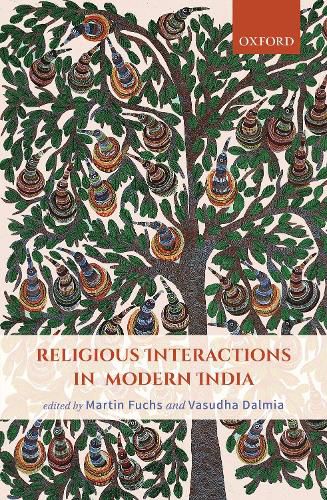Readings Newsletter
Become a Readings Member to make your shopping experience even easier.
Sign in or sign up for free!
You’re not far away from qualifying for FREE standard shipping within Australia
You’ve qualified for FREE standard shipping within Australia
The cart is loading…






Religions in South Asia have tended to be studied in blocks, whether in the various monolithic traditions in which they are now regarded, thus Hindu, Muslim, Buddhist, Sikh, Jain, Christian, or indeed in temporal blocks: ancient, medieval, modern. This volume seeks to look at relationships both within and between religions. It explores the diversity and the multiplicity within each tradition, the historical links between the various traditions which have crisscrossed the monoliths, but also the specific forms of their co-existence with each other, whether in accord or in antagonism. It views the interaction between ‘reformed’ and non-reformed branches within each of the modern monoliths, as for instance the Arya Samaj and the Sanatani positions within Hinduism. Its second major concern is to look for grounds shared in the process of modernizing. Though there has been much research to date on religious reform movements, there has been less concern with investigating and analyzing developments across the religious boundaries that so sharply divide Hinduism, Sikhism, Buddhism and Islam from each other today, and all of these from Christianity. And finally, it also looks at the changing social and political frames of reference shared by both religious and secularist strands of thought. The ‘religions’ targeted include Hindu discourses (Brahmo, Arya, Sanatana, and various traditional formations, the Aryan/Dravidian divide), Buddhist, Jain, Sikh and Islamic traditions, and Indian Christianity.
$9.00 standard shipping within Australia
FREE standard shipping within Australia for orders over $100.00
Express & International shipping calculated at checkout
Religions in South Asia have tended to be studied in blocks, whether in the various monolithic traditions in which they are now regarded, thus Hindu, Muslim, Buddhist, Sikh, Jain, Christian, or indeed in temporal blocks: ancient, medieval, modern. This volume seeks to look at relationships both within and between religions. It explores the diversity and the multiplicity within each tradition, the historical links between the various traditions which have crisscrossed the monoliths, but also the specific forms of their co-existence with each other, whether in accord or in antagonism. It views the interaction between ‘reformed’ and non-reformed branches within each of the modern monoliths, as for instance the Arya Samaj and the Sanatani positions within Hinduism. Its second major concern is to look for grounds shared in the process of modernizing. Though there has been much research to date on religious reform movements, there has been less concern with investigating and analyzing developments across the religious boundaries that so sharply divide Hinduism, Sikhism, Buddhism and Islam from each other today, and all of these from Christianity. And finally, it also looks at the changing social and political frames of reference shared by both religious and secularist strands of thought. The ‘religions’ targeted include Hindu discourses (Brahmo, Arya, Sanatana, and various traditional formations, the Aryan/Dravidian divide), Buddhist, Jain, Sikh and Islamic traditions, and Indian Christianity.